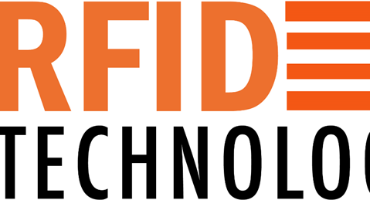How RAIN UHF RFID Enables Asset Tracking and Management
Tagging Assets with RFID UHF Labels
Passive RAIN UHF RFID tags are attached to tools, machinery, IT equipment, medical devices, or any other high-value assets.
Each tag has a unique identifier (EPC), enabling individual tracking of assets.
Tags require no internal power and are durable, cost-effective, and can be embedded, stuck, or riveted depending on the asset type.
Installing RFID Readers to Detect and Locate Assets -
RFID UHF Readers and antennas are installed at strategic locations to capture tag data:
Cabinets or tool cribs: Track when tools are checked in/out.
Doorways and gateways: Log movement in and out of rooms or zones.
Ceilings or overhead zones: Provide wide-area coverage to detect asset location and movement.
These readers constantly scan the area and automatically detect tagged assets without human intervention.
Tracking the Asset Lifecycle
Assets are tracked through key lifecycle stages:
Storage – know exactly where assets are at all times.
Deployment and use – identify which asset was used, by whom, and where.
Maintenance and inspection – schedule and confirm compliance-related checks.
Return and retirement – monitor return of assets and end-of-life processes.
Real-Time Visibility and Data Integration
Real-Time Asset Visibility
View asset location and movement in real-time dashboards.
Get alerts when assets:
Are missing or removed from restricted areas
Are idle for too long (underutilization)
Are due for maintenance or calibration
Enterprise System Integration
RFID data integrates with Enterprise Asset Management (EAM), ERP, or CMMS platforms to:
Automate recordkeeping
Enable asset audits
Optimize resource planning
Business Value and Benefits
1. Improved Asset UtilizationIdentify underused equipment
Prevent unnecessary purchases or rentals
Optimize tool circulation across teams or sites
2. Loss Prevention and Security
Detect unauthorized movement of assets
Automate alerts for misplaced or lost items
3. Time Savings
Eliminate manual inventory counts
Reduce time spent searching for tools or equipment
4. Operational Efficiency
Automated check-in/check-out systems for shared assets
Accurate historical data for maintenance planning
5. Maintenance & Compliance
Schedule proactive maintenance based on real usage
Maintain audit trails for inspections, repairs, or calibrations
Example Scenario: Tool Tracking in an Industrial Facility
Each tool is tagged with a RAIN UHF RFID label.
Tools are stored in smart cabinets with RFID readers.
When a worker removes a tool, the system logs who took it and when.
If the tool is not returned within a set time, alerts are generated.
Overhead RFID readers track the real-time location if tools move between work zones.
The system integrates with ERP or CMMS for maintenance scheduling and asset reconciliation.

